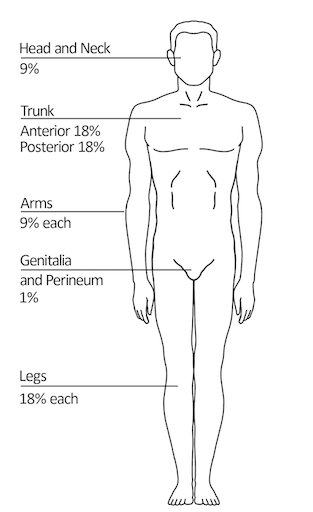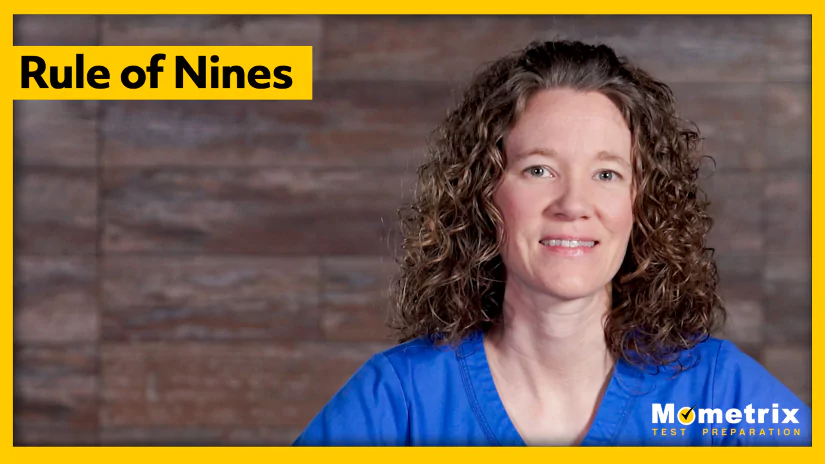
Welcome to this video tutorial! Today we’re going to look at the “rule of nines,” which is a quick assessment tool used for determining the size of a burn until a more thorough assessment can be made.
Determining Burn Severity
The size and depth of a burn determines the severity of the burn injury. Several factors are considered when determining the severity of burns, including the size and depth, age of the patient, body part involved, mechanism of injury, injuries sustained at the time of burn, and if there is a history of cardiac, pulmonary, renal, or hepatic disease.
Burn Percentage
The percentage of total body surface area burned is estimated with the use of charts showing the anterior and posterior side of the body, divided into areas equal to multiples of 9%. The measurement of burn surface area is important for estimating the patient’s fluid requirements and determining hospital admission criteria. To estimate body surface area (BSA) of a burn, the rule of nines assigns BSA values to each major body part.
The body parts that make up 9% each include the entire left arm, entire right arm, head, chest, and abdomen. You’ll see that 3 parts are labeled 18%: the entire back, entire left leg, and entire right leg. These can also be broken down into 9% sections: the upper back and lower back, (or similarly the right side and left side of the back); the front right leg, the back right leg, the front left leg, and the back left leg.
And then the groin makes up the remaining 1%. All this adds up to 100% of the body.
The part of the body burned must be considered when evaluating the extent and severity of the burn. A 3% burn to the anterior thigh is not as serious as a 3% burn to the neck, face, or perineal area.

This estimation allows the emergency medical provider to obtain a quick estimate of how much body surface area is burned. For example, if a patient’s entire left leg (18%) and entire right leg (18%) are burned, about 36% of the patient’s body surface area is affected.
If their entire right arm (9%) and the right side of their head (4.5%) were burned, the amount of body surface area affected would be 13.5%. Calculations are modified for infants and children under 10 years old because of their larger head and smaller body size. The head is assigned 18%, and the legs are given 13.5% each.
Review
Let’s look at a review question:
If a patient has a burn to the entire left side of his back and the posterior side of his left arm, what is the estimated body surface area burned?
- 36%
- 27%
- 13.5%
- 9%
The entire left side of the back makes up 9%, plus the posterior side of the left arm is 4.5% (if it was his entire arm, anterior and posterior, then it would be 9% for the entire left arm). In this case, it was just one side of the arm, so it is 4.5%.
Thank you for watching this video – Hopefully this helps you in your studies!

